Unlocking Efficiency: The Advantages of High-Quality Valve Bodies for Global Buyers
In the ever-evolving landscape of manufacturing and industrial applications, the pursuit of efficiency is paramount, particularly for global buyers in sectors reliant on optimized performance. Valve bodies play a crucial role in this quest, serving as essential components that govern the flow of fluids within various systems. According to a recent report by MarketsandMarkets, the global valve market is projected to reach $93.3 billion by 2025, a significant increase driven by the growing demand for high-quality valve assemblies to enhance operational efficiency. Quality valve bodies not only ensure reliability and durability but also contribute to reduced maintenance costs and enhanced system performance. This blog will explore the substantial advantages of investing in high-quality valve bodies, enabling buyers to unlock efficiencies and drive success in their operations while navigating the complexities of global supply chains.

The Critical Role of High-Quality Valve Bodies in Industrial Applications
In industrial applications, the significance of high-quality valve bodies cannot be overstated. These critical components ensure the optimal flow control and management of liquids and gases across various systems. A study by the International Valve Manufacturing Association (IVMA) highlights that well-manufactured valve bodies can reduce maintenance costs by up to 30%, demonstrating their impact on operational efficiency. Additionally, high-quality materials and precise engineering minimize leaks and failures, ultimately enhancing the overall productivity of industrial operations.
**Tip:** When selecting valve bodies for your projects, prioritize those that meet industry certifications and standards. This often indicates reliability and performance that can withstand challenging operational conditions.
Moreover, high-quality valve bodies contribute significantly to energy savings. According to a report by the Global Energy Management Institute, implementing advanced valve technologies can lead to energy consumption reductions of approximately 20% in large-scale systems. This not only reduces environmental impact but also translates into substantial cost savings over time.
**Tip:** Always consider the long-term benefits of investing in superior valve bodies rather than opting for the cheapest options. The initial investment can yield significant returns through enhanced durability and reduced operational disruptions.
Cost Efficiency: How Investing in Quality Valve Bodies Saves Money
Investing in high-quality valve bodies can lead to significant cost savings for businesses in the long run. While the initial outlay may be higher compared to lower-quality alternatives, the durability and reliability of premium valve bodies reduce the frequency of replacements and repairs. This means fewer disruptions to operations, which can translate into substantial savings over time. High-quality components also minimize downtime, ensuring that production schedules remain intact and that businesses can meet customer demands without interruption.
Moreover, superior valve bodies often come with enhanced performance characteristics, such as better flow control and resistance to wear and corrosion. This leads to improved efficiency in fluid management, decreasing energy consumption during operations. When companies harness this efficiency, they not only optimize their operational costs but also contribute to more sustainable practices. Ultimately, investing in quality valve bodies is not merely a purchase; it is a strategic decision that pays off in both immediate and long-term financial benefits, reinforcing the notion that quality is a key component of cost efficiency.
Enhancing Operational Durability with Superior Valve Body Design
The operational durability of equipment in various industries hinges significantly on the components used, particularly valve bodies. Superior valve body designs not only enhance performance but also extend the lifespan of critical systems. High-quality materials and precision engineering play pivotal roles in minimizing wear and tear, which ultimately results in fewer maintenance requirements and reduced operational costs. As industries push for higher productivity, investing in robust valve body designs ensures that systems can withstand rigorous conditions without compromising functionality.
Furthermore, advanced valve body designs incorporate innovative features that further enhance durability. For instance, coatings and treatments that resist corrosion and temperature fluctuations contribute to the longevity of these components. Such enhancements are particularly crucial in sectors like oil and gas, chemical processing, and wastewater management, where the environment can be harsh and unforgiving. By choosing high-quality valve bodies, global buyers can ensure their operations run smoothly, consistently delivering high performance while mitigating risks associated with failures and downtime. This focus on durability not only supports immediate operational goals but also aligns with long-term sustainability objectives.
Unlocking Efficiency: The Advantages of High-Quality Valve Bodies for Global Buyers - Enhancing Operational Durability with Superior Valve Body Design
| Feature | High-Quality Valve Bodies | Standard Valve Bodies |
|---|---|---|
| Material Quality | High-grade alloys | Common alloys |
| Durability | Up to 50% longer lifespan | Standard lifespan |
| Pressure Resistance | Higher pressure ratings | Lower pressure ratings |
| Operational Efficiency | Improved flow characteristics | Standard flow characteristics |
| Maintenance Needs | Reduced maintenance frequency | Higher maintenance frequency |
| Cost Efficiency | Lower total cost of ownership | Higher total cost of ownership |
The Impact of Quality Control on Valve Body Performance and Reliability
Quality control is paramount in the production of valve bodies, significantly influencing their performance and reliability. According to a recent report by MarketsandMarkets, the global valve body market is projected to reach $38.7 billion by 2026, with an annual growth rate of 5.4%. This growth underscores the increasing importance of high-quality components in various industries, from oil and gas to water management.
Rigorous quality control measures ensure that valve bodies can withstand extreme conditions, prevent leaks, and reduce downtime, all of which are crucial for maintaining operational efficiency.
A key aspect of quality control involves advanced testing methods and standards compliance. The American Society for Testing and Materials (ASTM) indicates that proper material selection and process verification can reduce failure rates by up to 40%. By employing stringent quality assurance practices, manufacturers can enhance the durability and reliability of valve bodies. This not only improves product lifespan but also contributes to overall system performance, ultimately leading to cost savings for global buyers.
Investing in high-quality valve bodies fortified by meticulous quality control can transform operational capabilities, ensuring robust performance across numerous applications.
Global Sourcing Strategies for Optimal Valve Body Acquisition
In today's global marketplace, acquiring high-quality valve bodies is essential for ensuring operational efficiency and product reliability. Global buyers are increasingly adopting strategic sourcing methods to navigate the complexities of the supply chain. By evaluating suppliers based on their production capabilities, certifications, and past performance, companies can select partners that align with their quality and operational standards. Conducting thorough market research and leveraging technology enables buyers to identify the best manufacturing locations for their needs.
Strategic sourcing also involves fostering long-term relationships with suppliers. Building strong partnerships can lead to better negotiation terms, priority access to innovations, and improved delivery times. By staying engaged with manufacturers through regular communication and site visits, global buyers can ensure that their sourcing strategies remain flexible and responsive to market changes, ultimately leading to a more efficient procurement process. Additionally, utilizing data analytics can help assess supplier performance and make informed decisions, contributing to a more streamlined approach to valve body acquisition.
Related Posts
-
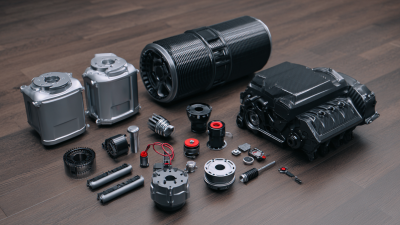
A Comprehensive Guide to Selecting the Best Motor Parts Based on Application and Features
-
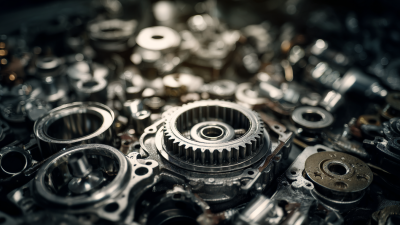
12 Effective Tips for Choosing the Best Engine Parts
-
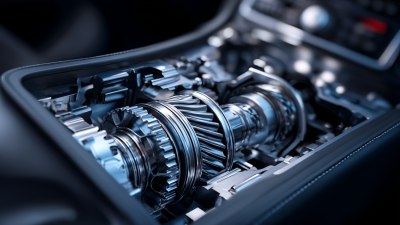
What Makes the Best Auto Transmission Essential for Modern Vehicles
-
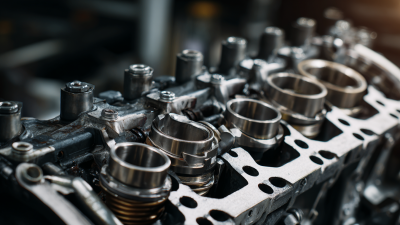
Discover Premium Remanufactured Engine Parts from China’s Leading Manufacturing Factory
-

Quality Triumphs in Global Markets Unveiling Best Auto Spare Products from China
-
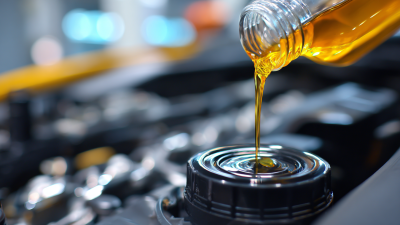
7 Key Reasons Your Engine Coolant Choice Can Save You Money